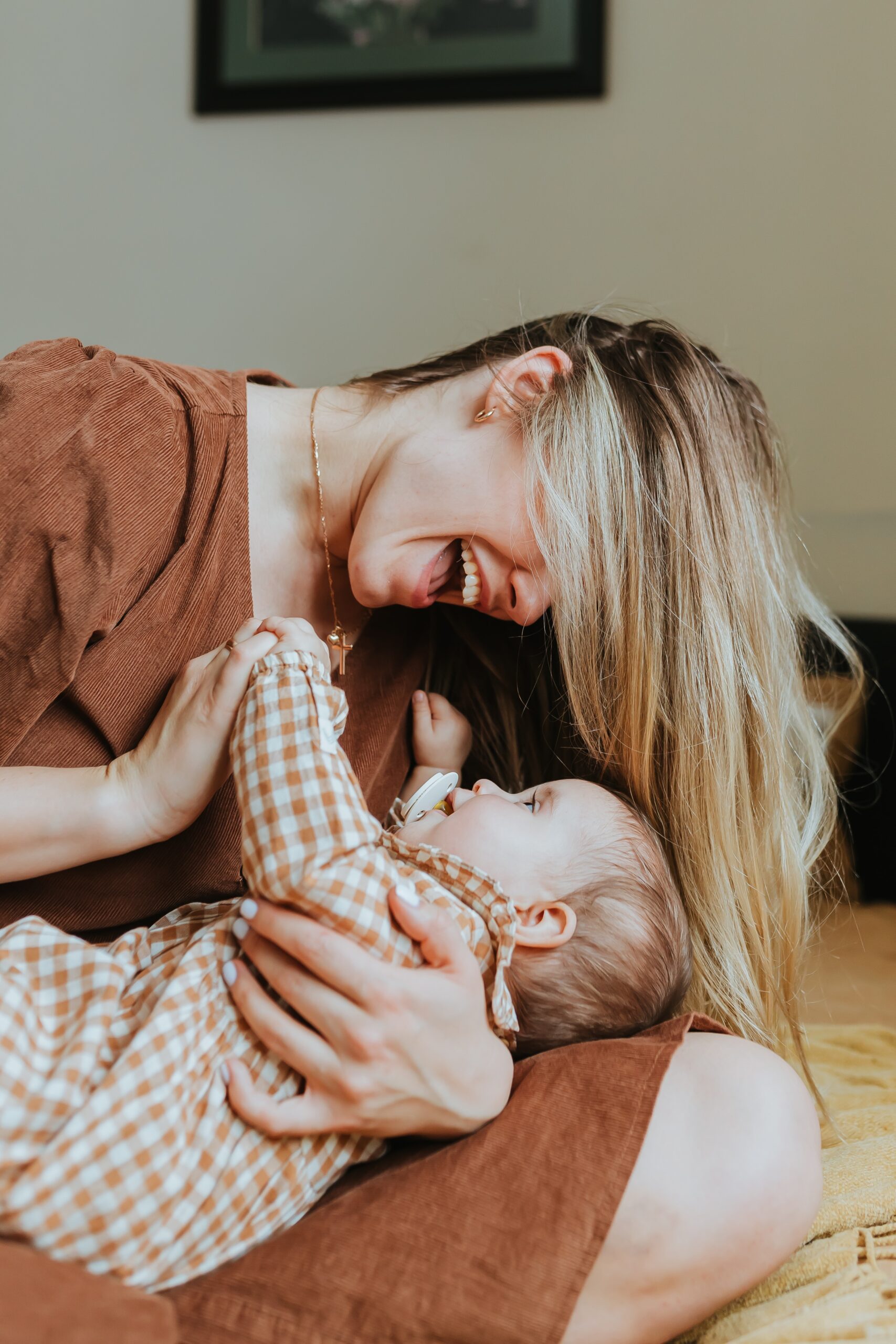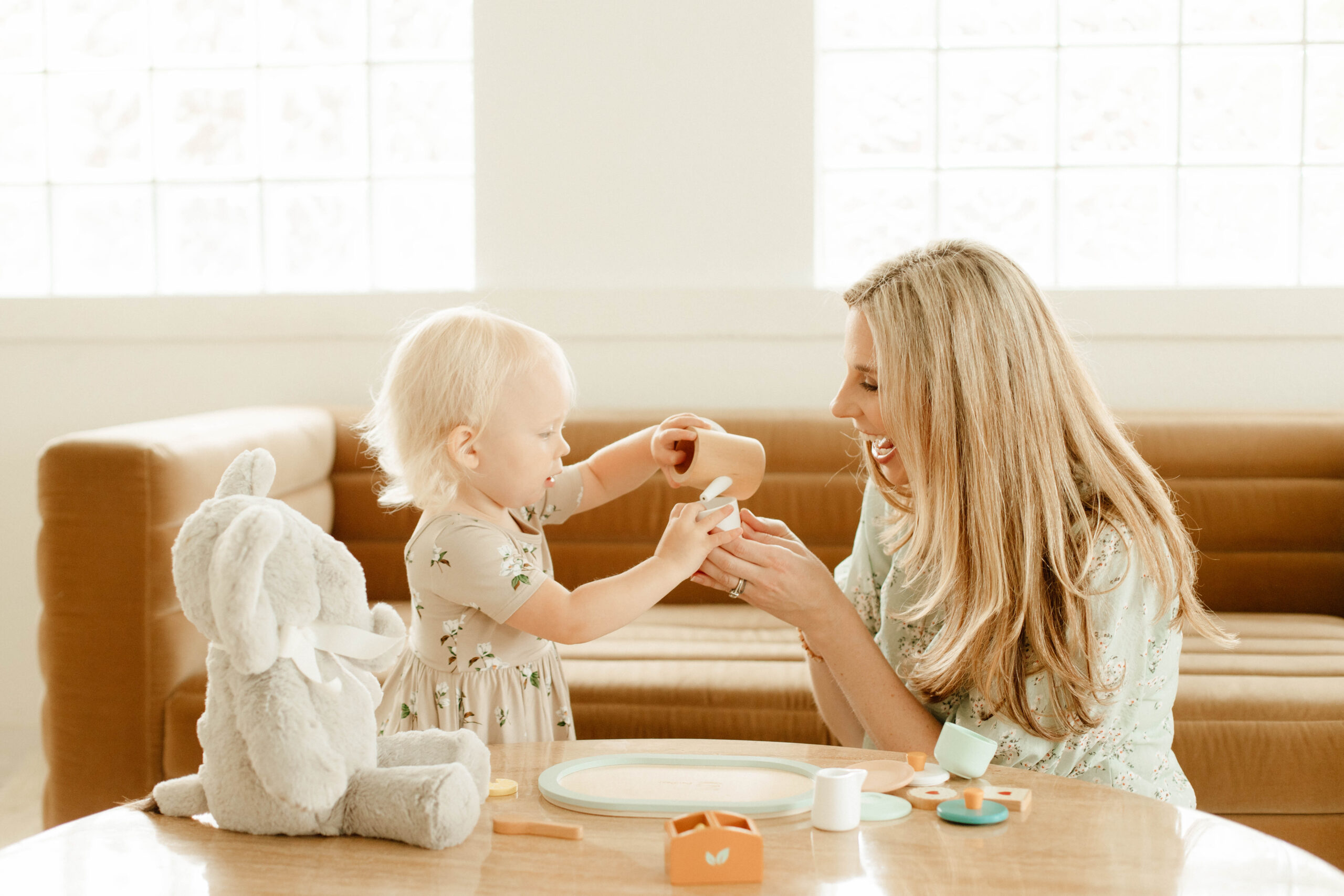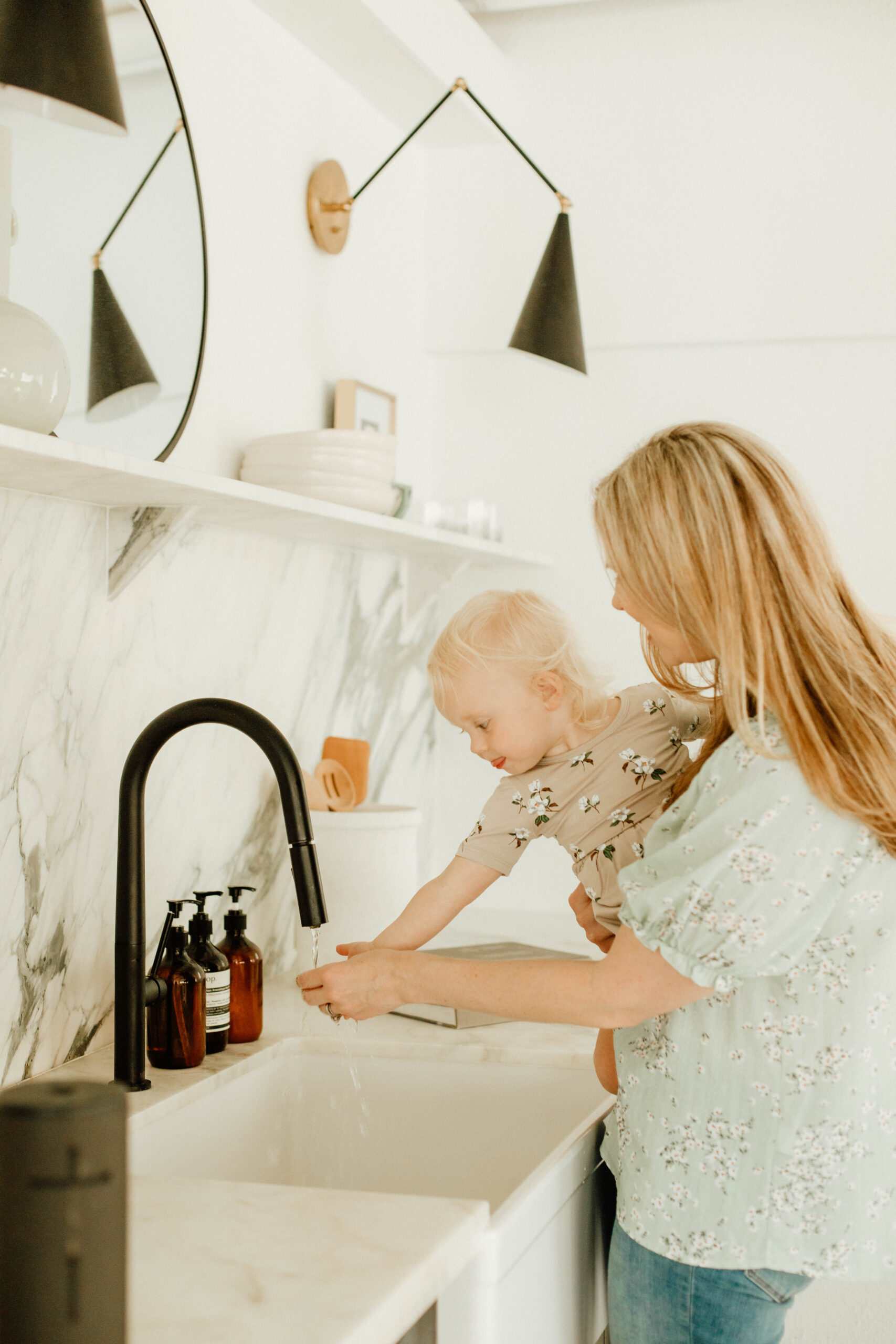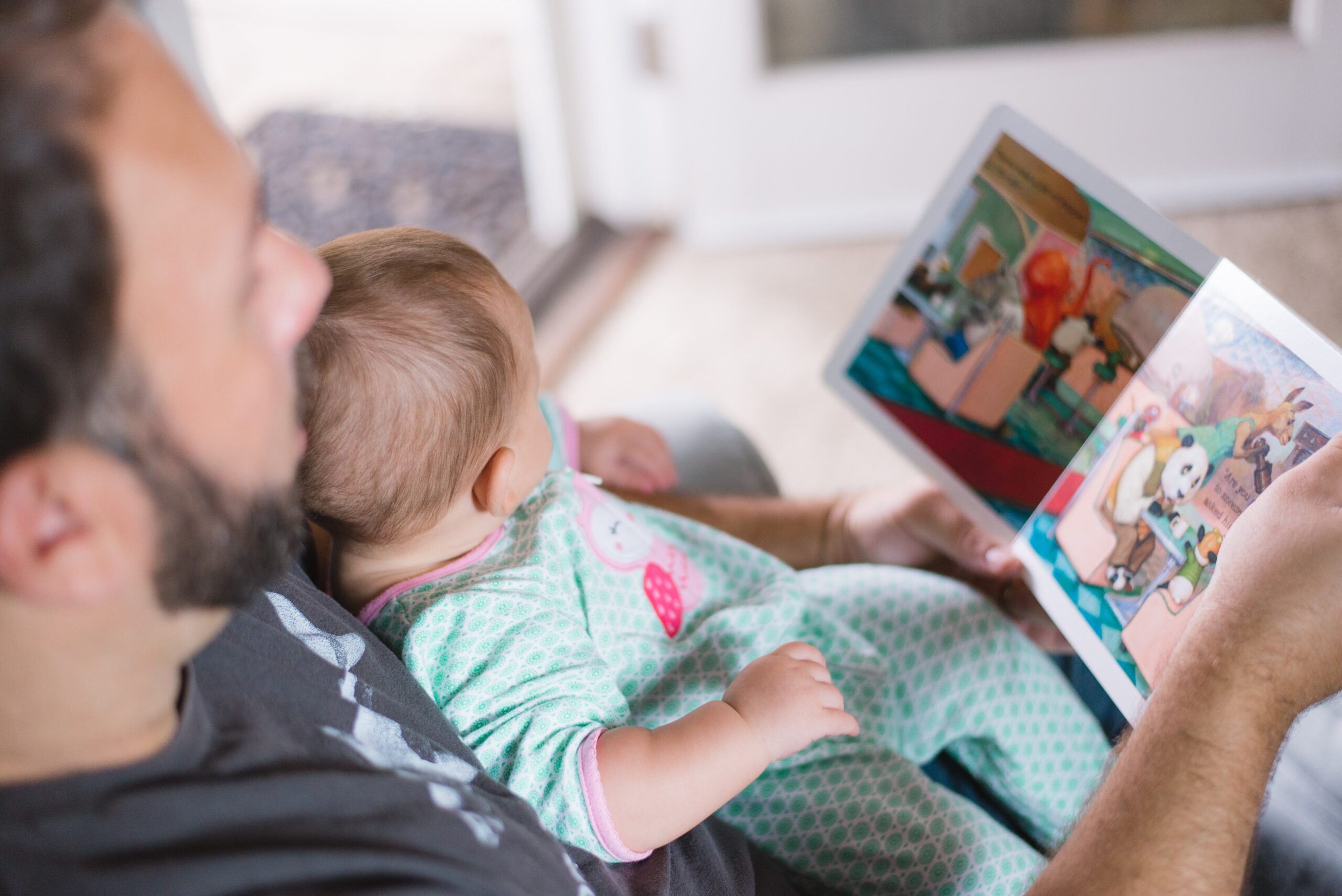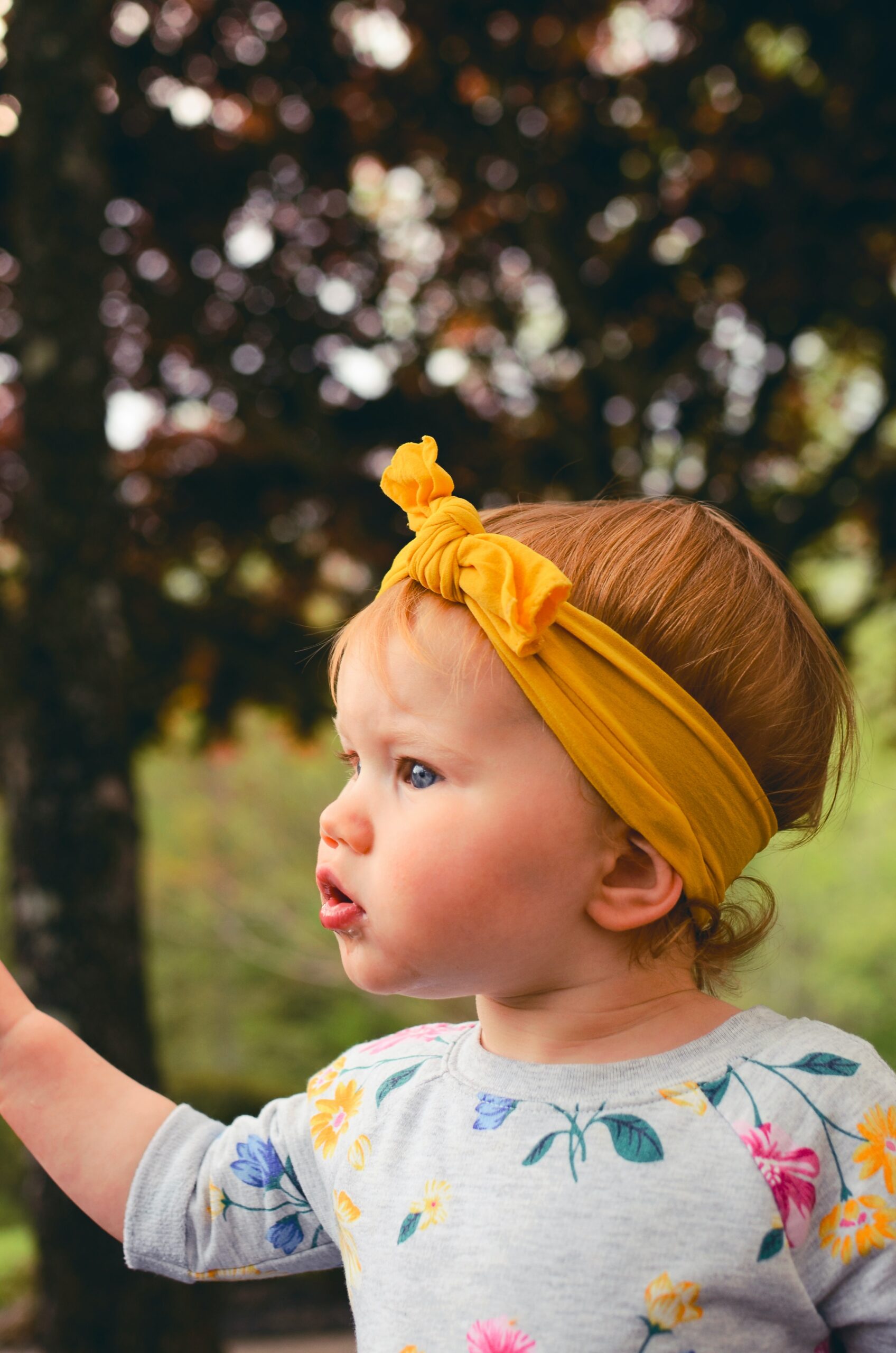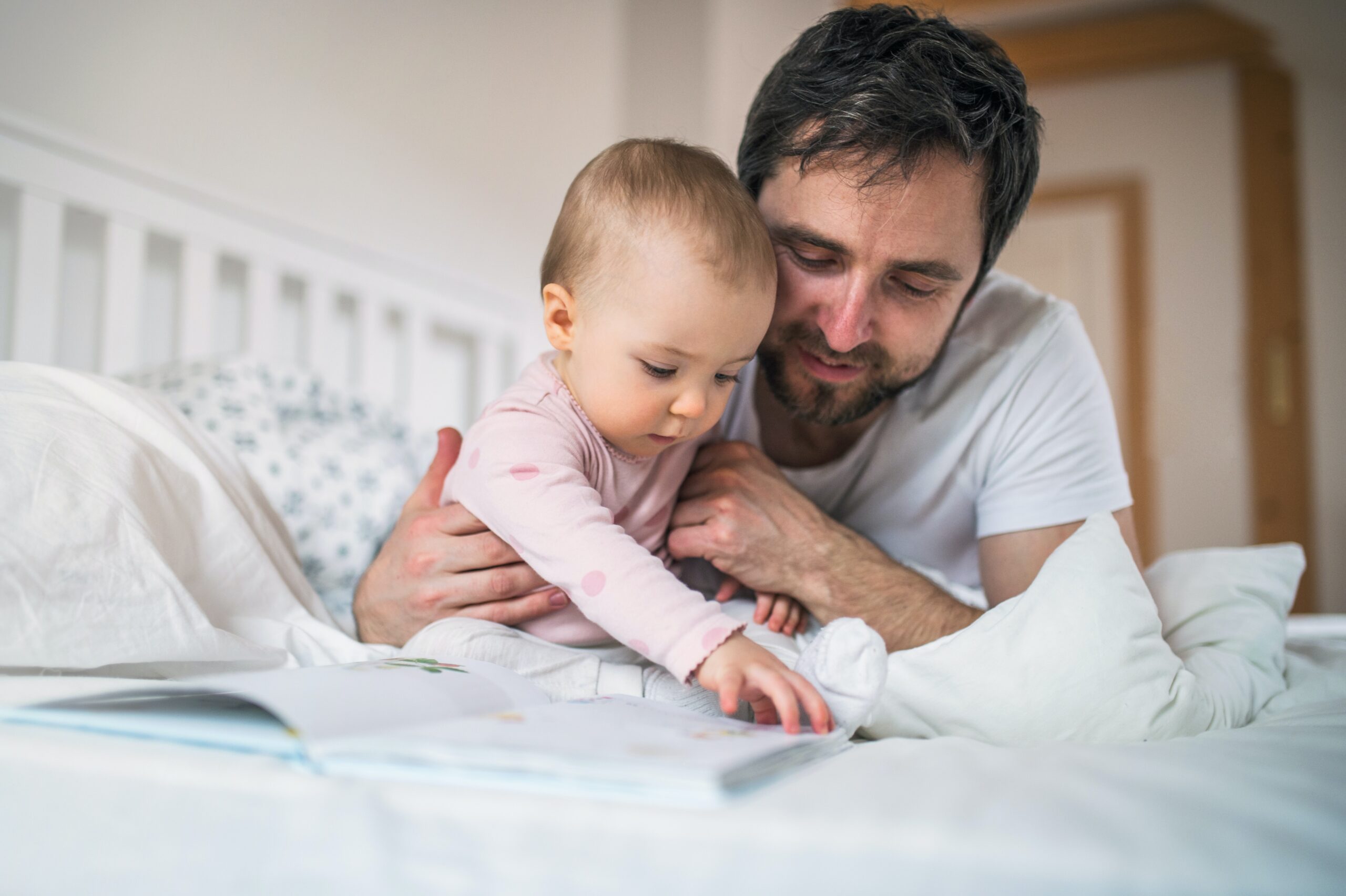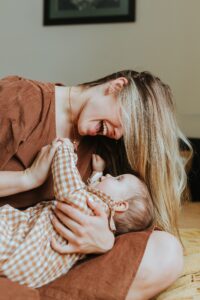
How babbling begins
When we think of babies, we often think of their sweet little voices babbling away. But beyond being adorable, babbling is a huge milestone for speech development!
During the first six months, baby’s sounds are primarily reflexive nature and aren’t under their control. This includes sounds like crying, burping, and coughing, Then, around 2-3 months your baby’s vocal mechanism starts growing. They are also awake for more hours in the day This results in sounds we call cooing and gooing and we hear open mouth vowels like “gooh” and “gaah.”
Around 4-6 months, babies begin playing with sounds. This can sound like squeals and raspberries and even some consonant sounds like p, b, or m. Studies even show that your baby’s vocalizations sound more like language when they’re interacting with you!
Somewhere around 7-9 months, the sounds your little one makes changes and they actually sound like syllables! This is known as canonical babbling. These can be repeated syllables (dadada) or varied (ba-dee-da). This is a big deal because these sounds resemble the syllables we use in words, In fact, the consonants your baby babbles with will likely appear in the first words (1)
Towards the end of this period, we start to hear babies engage in even more advanced babbling, known as jargon. Jargon is when babies string together long “sentences ” of sounds with the rhythm of our language. It even sounds like they are having a whole conversation that make no sense at all! (3)
Although these are stages of babbling, they all occur together. It’s typical to continue to hear babbles, even after your little one starts using words.
Fun facts about babbling
Just as hearing babies babble with sounds Deaf babies begin to babble with their hands by making hand shapes that don’t convey meaning
In one study, participants were able to guess a baby’s native language by hearing 15 seconds of their babbling! That’s because babbling takes on the sounds and rhythm of a baby’s native language(s).
Bilingual babies babble differently when interacting with different people, depending on which language that person speaks to them in! (10)
Why do babies babble?
When your baby babbles, they are learning how to move the muscles needed for talking. In other words, they are practicing the building blocks needed for speech.
When your baby puts their lips together, they learn they can make an M sound. When they move their tongue a bit, and they discover how to make the D sound. They learn how to get louder and quieter and how to control their volume and pitch. Babbling allows your baby to discover how their mouth muscles work. Your baby is also hearing these sounds, which will set the stage for speech development.
In fact, a recent study found that the age at which a baby starts to babble predicts when he will say his first words[8].
When your baby isn’t babbling
Research shows there is a correlation between little babbling and language disorders (8 & 9). This makes sense when we think about all the practice babies get with both making and listening to sounds get when they are babbling.
That’s why you want to be proactive when you notice your little one isn’t babbling. The first three years are critical for learning. By age 3, the major circuits of the brain are mature and it can be harder to make significant changes (First Words Project).
Early Intervention makes a difference! We can literally change the brain when we give children the right support early on. This can minimize, and even prevent, problems later on with reading, social skills, behavior, and learning.
What can I do to support my little one at home with babbling?
Imitate sounds your baby makes: These back and forth interactions are the first “conversations” we have with little ones and imitating them back let’s them know you hear them and what they’re saying and want to engage!
Get face to face: Getting face to face allows your little one to pay close attention to your mouth and face. Let them feel your mouth as you make sounds such as “mmm” and “bababa”
Interpret their message: A study by Julie Gross-Lois found that when parents responded to their baby’s vocalizations right after they vocalized by talking about what they were looking at, the infants had higher vocabulary and more gestures in their communication at 15 months of age (4).
Get support: A speech therapist can show you how to use speech therapy strategies to be proactive with speech development! If your toddler didn’t babble, this is a reason to be extra proactive. My virtual course will show you step-by-step how to support your toddler’s speech development at home.
Have a baby or one on the way? Sign up to get on the waitlist for my brand new course that will show you exactly how to get your baby’s speech and language off to the best possible start rom the very beginning!
References:
- First Words Project (n.d.). What Does it Take to Learn to Talk. Retrieved August 22, 2023, from https://firstwordsproject.com/
- Franklin, B., Warlaumont, A. S., Messinger, D., Bene, E., Iyer, S. N., Lee, C., Lambert, B. & Oller, D. K. (2014). Effects of Parental Interaction on Infant Vocalization Rate, Variability and Vocal Type. Language, Learning and Development, 10(3): 279–296.
- Golinkoff, Roberta Michnick, and Kathy Hirsh-Pasek. How Babies Talk: The Magic and Mystery of Language in the First Three Years of Life. Plume Book, 2000.
- Gros-Louis, J., West, M. J., & King, A. P. . Maternal responsiveness and the development of directed vocalizing in social interactions. Infancy.
- Iyer, S. N. & D. K. Oller. (2008). Prelinguistic Vocal Development in Infants with Typical Hearing and Infants with Severe-to-Profound Hearing Loss. The Volta Review, 108(2), 115-138.
- Iverson, J. M., Hall, A. J., Nickel, L. & Wozniak, R. H. (2007). The Relationship between Reduplicated Babble Onset and Laterality Biases in Infant Rhythmic Arm Movements. Brain and Language, 101(3): 198–207.
- Lowry, L. (n.d.). https://www.hanen.org/Helpful-Info/Articles/Baby-Babble–A-Stepping-Stone-to-Words.aspx. The Hanen Center. www.Hanen,org
- McGillion, M., Herbert, J.S., Pine, J., Vihman, M., dePaolis, R., Keren-Portnoy, T., & Matthews, D. (2017). What Paves the Way to Conventional Language? The Predictive Value of Babble, Pointing, and Socioeconomic Status. Child Development, 88(1), 156-166.
- Overby, M., Caspari, S., and Schreiber, J. Volubility, Consonant Emergence, and Syllabic Structure in Infants and Toddlers Later Diagnosed With Childhood Apraxia of Speech, Speech Sound Disorder, and Typical Development: A Retrospective Video Analysis. Journal of Speech Language Hearing Research, 2019 Jun 19;62(6):1657-1675.
- Olswang, L.B., Rodriguez, B. & Timler, G. (1998). Recommending Intervention for Toddlers With Specific Language Learning Difficulties: We May Not Have All the Answers, But We Know a Lot. American Journal of Speech Language Pathology, 7, 23 – 3
- Sundara, M., Ward, N., Conboy, B., & Kuhl, P. (2020). Exposure to a second language in infancy alters speech production. Bilingualism: Language and Cognition, 23(5), 978-991. doi:10.1017/S1366728919000853
